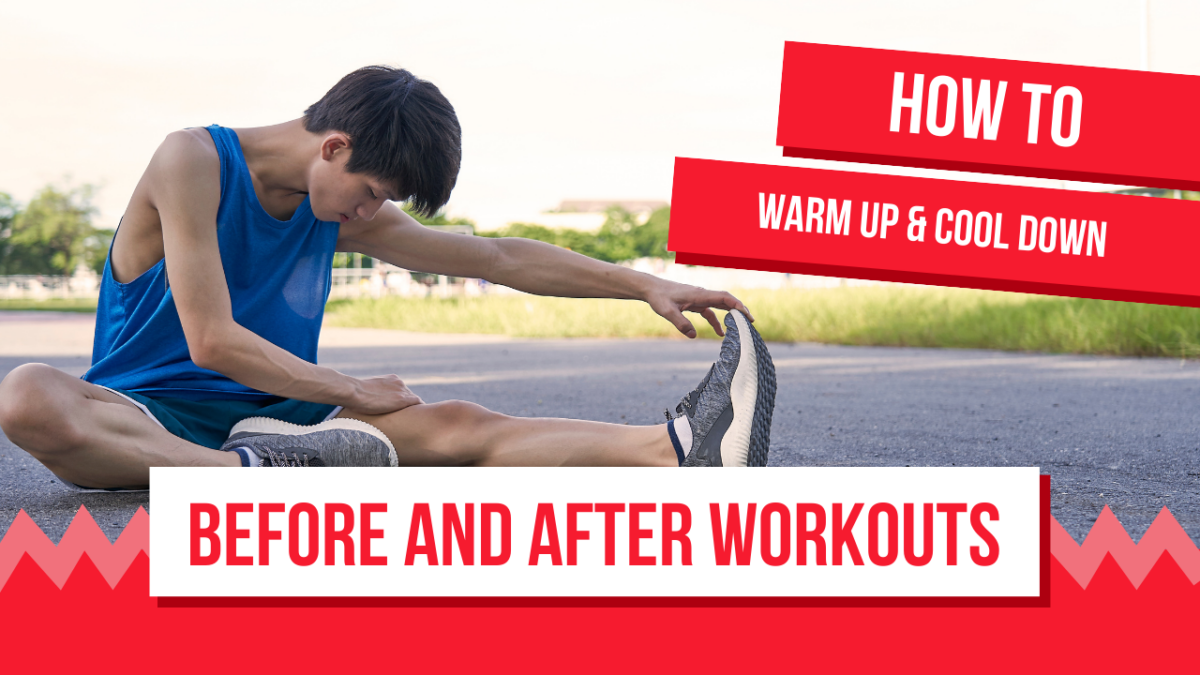Warming up and cooling down are essential components of any effective workout routine. While many of us focus on the main exercise, skipping a proper warm-up or cool-down can lead to reduced performance, increased risk of injury, and prolonged recovery times. Here’s a comprehensive guide to warming up and cooling down the right way.
Why Warm Up and Cool Down Matter
- Warm-Up: Prepares your body for physical activity by increasing blood flow, raising muscle temperature, and enhancing flexibility. It reduces the risk of injury and primes your body for optimal performance.
- Cool-Down: Helps your body gradually return to its resting state, reduces muscle stiffness, and prevents dizziness caused by a sudden drop in blood pressure.
How to Warm Up Properly
A good warm-up should last 5-10 minutes and include dynamic movements that target the muscles you’ll be using during your workout.
1. Start with Light Cardio
Engage in low-intensity cardio to gradually increase your heart rate and circulation. Examples include:
- Brisk walking
- Jogging in place
- Jumping jacks
2. Incorporate Dynamic Stretches
Dynamic stretches improve flexibility and mobility while actively engaging your muscles. Try these:
- Leg Swings: Swing your legs forward and backward to loosen up your hips.
- Arm Circles: Rotate your arms in small and large circles to activate your shoulders.
- Walking Lunges: Step forward into a lunge position, alternating legs.
3. Do Movement-Specific Drills
If you’re preparing for a specific workout, mimic the movements you’ll perform but at a lower intensity. For instance:
- Runners can perform high knees or butt kicks.
- Weightlifters can do bodyweight squats or light barbell lifts.
How to Cool Down Properly
A cool-down session should also last 5-10 minutes and focus on gradually lowering your heart rate and stretching your muscles.
1. Light Cardio to Slow Down
Perform low-intensity movements to help your heart rate and breathing return to normal. Examples include:
- Slow walking
- Gentle cycling
- Easy jogging transitioning into a walk
2. Static Stretching
Static stretches are ideal after a workout when your muscles are warm and pliable. Hold each stretch for 15-30 seconds without bouncing. Examples:
- Hamstring Stretch: Sit on the ground with one leg extended and reach for your toes.
- Chest Stretch: Stand in a doorway and press your arms against the frame to stretch your chest.
- Quad Stretch: Stand on one leg and pull your opposite foot toward your glutes.
3. Focus on Breathing
Incorporate deep breathing exercises to relax your body and mind. Breathe deeply through your nose, hold for a few seconds, and exhale slowly.
Tips for Effective Warm-Ups and Cool-Downs
- Be Consistent: Make warming up and cooling down a non-negotiable part of your routine.
- Listen to Your Body: Adjust the intensity and duration of your warm-up or cool-down based on how you feel.
- Stay Hydrated: Drink water before and after your workout to replenish fluids.
The Benefits of Doing It Right
A proper warm-up and cool-down will:
- Improve your workout performance.
- Reduce muscle soreness and stiffness.
- Enhance flexibility and range of motion.
- Prevent injuries and promote faster recovery.
By dedicating just a few extra minutes to warming up and cooling down, you can maximize the effectiveness of your workouts and keep your body healthy and injury-free. So, take the time to prep and recover—your body will thank you!

